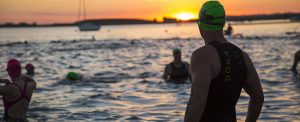When you think of the greatest athletes throughout history and of the up-and-comer still trying to earn a spot on a podium, one thing is true of them all—there is always room for improvement. Michael Phelps doesn’t dominate every heat, Scott Jurek doesn’t hold every endurance record, and even Eddy Merckx didn’t win every race. If these athletes could improve, certainly all of us chasing finish lines everyday can find ways to improve our overall physicality and athleticism. There are, of course, sport-specific drills and exercises that will lead to improvement in your chosen discipline(s). We want to highlight four ways athletes of every stripe can monitor and/or improve their overall fitness.
- VO2max (cardiorespiratory capacity) – Simply put, this measures how much oxygen you can pull in and how efficiently you use that oxygen when you’re pushing your body at full capacity. While we generally think of this as a metric for endurance runners, it is no less beneficial to cyclists, swimmers, and triathletes. The best news? If you aren’t happy with your results, there are drills and dietary changes you can make to better your results.
- Muscular Endurance – Muscular endurance is really a measure of how many times your muscles can perform a given task correctly before you just can’t do it anymore. There are some standard tests or ways to measure muscular endurance. Typically, you’ll time and count sit ups and pushups. You can simply compare your results over time to map progress, or there are online tools to score both the standard sit up and pushup tests.
- Weight and Body Fat – We know—we’ve all been told to cling to our scales and then to disregard them completely. That is why it is important to occasionally use body fat calculations as a check on the scales. Weight fluctuations can indicate that your body is responding to changes in your training and diet, either positively or negatively. Use the scale to monitor body changes and body fat measurements to help explain the change.
- Flexibility – There is a great deal of debate in recent years around the benefits of flexibility. For some sports, like running, tighter ligaments and tendons seem a benefit. For other sports, like swimming, flexibility seems a necessary trait for success. While there do seem to be boundaries for each of us, after all our bodies are all different, proper exercise and stretching can increase our overall flexibility. This increased range of motion can aid improvement across athletic disciplines.
MORE ON THE HOTSHOT BLOG
5 Best Stretches for Swimmers: Add these to your regimen.
Carbs and Protein: 7 tips for proper intake for optimal fuel.
HOTSHOT at SwimRun: Event director and triathlete Lars Finanger shares his personal experience with muscle cramping, and why he’s encouraging all athletes to carry HOTSHOT.

